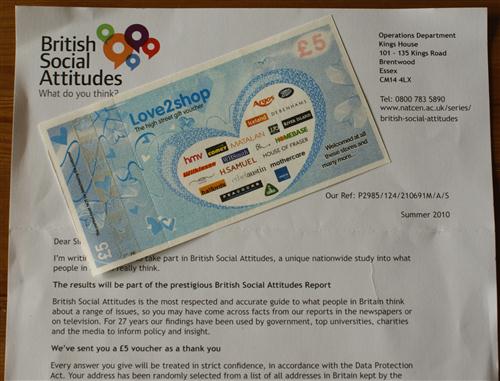English School Embraces iPads, Apple and Techno Brainwashing
Posted by keith on 30th August 2011
There is a rule in civilized society that goes something like this: Whenever something is compulsory then it must have something wrong with it. We see it all the time, in the school system and it’s one-size-fits-all approach to child indoctrination; in the application of statutory rules that are essentially corporate policies; in the forced registration and noting of people and everything associated with them – compulsion is rampant within civilization because if it weren’t then people might do whatever they liked, and that would be a terrible blow to the economy and the power of the ruling minority.
Such is the micro-management taking place in every aspect of our lives, that it comes as little surprise when a new compulsion is introduced, and a great surprise when any genuine freedom is granted. One such new compulsion, or so it seems, that only briefly caused a ripple – and then possibly only because of a fear of increased access to pornography – was a new scheme introduced by Longfield Academy in Dartford, Kent. Essentially, every student (of state-sponsored indoctrination) will be given an iPad, which would be used to, in the school’s own words: “revolutionise learning in the new Academy and at home”. There is little about this idea that doesn’t make my skin creep, and the creeping becomes more intense as you delve deeper into the details.
The otherwise abhorrant Daily Mail was refreshingly candid in the headline to the story that broke in July, 2011: “School orders parents to buy their children a £600 iPad2”. It went on:
A school came under fire yesterday for forcing its parents to buy a £600 iPad2 for their children. Teachers at Longfield Academy, in Dartford, Kent, have succumbed to the current technology trend and are bulk-buying 1,400 of the touchscreen computer tablets made by Apple. From September the school will require all pupils to have one and are installing interactive whiteboards that link to the iPads.
Parents will have to splash out £16 a month, for three years, for the iPads – equivalent to £576. The total cost to parents at the school will be a staggering £806,400. The move by Longfield, a school for pupils aged 11 to 18, is the first of its kind in England, but hundreds of schools could follow suit as it has been revealed that some 500 are poised to adopt a similar scheme with digital education charity, e-learning Foundation.
Experts yesterday criticised Longfield for piling pressure on cash-strapped parents to pay for the ‘toy’. They questioned the school’s desire to use iPads as an educational tool – saying they were more suited to watching movies, surfing the internet and playing music.
And they warned that it will lead to an increase in the number of pupils viewing porn.
Education expert Sue Palmer, author of Toxic Childhood, said: ‘This school is jumping on the “cool” bandwagon. It’s after cheap headlines. It should instead be focusing on the quality of education it provides. The school is shamefully giving parents the impression that buying an expensive iPad is in their child’s long term interest. In reality parents are being asked to invest a small fortune in something that is little more than a toy and hugely associated with the viewing of porn.
Longfield’s decision to teach all pupils with an iPad is the first of its kind in the England.
To be honest the “porn” issue is a moot point – people will view porn whenever and however it is available, so long as it remains available, so the iPad is no worse than any other technology on this point. On every other point, though, it is clear that the scheme does nothing but feed the technological obsession of the school system while lining the pockets of Apple Computer. This latter point is made clear via the school’s own newsletter, all about the scheme, which explained:
On the 30th March two parents events were carried out where the vision for the scheme was outlined and the iPad project
manager from Apple demonstrated the educational applications of the device.
Going on to answer the revealing question, “Why are we going to use Apple only?” with a trite explanation pointing to “life expectancy” and “creative and collaborative work”, conveniently skipping over the idea that Open Source or even other commercial offerings have much the same capabilities. But that’s not the point. Apple appears to have benefitted perhaps accidentally from this decision but then been called in to ensure the technology becomes binding. Brand loyalty is what all corporations love best, and what better way to seal brand loyalty than to make your brand ubiquitous in a (to all intents and purposes) compulsory “learning” environment?
Apple love this lots, as you can see from their Youth Programs, offering among other things:
Youth Workshops
From composing a song in GarageBand to building a photo album to creating a compelling Keynote presentation, our Youth Workshops offer families with kids (ages 6 to 13) a chance to work together to hone their Mac skills and use iLife and iWork applications to complete exciting projects. We offer the free workshops at Apple Retail Stores worldwide.
Field Trip to the Apple Store
Take your students on a Field Trip to an Apple Retail Store for an unforgettable learning experience. On their Field Trip, students can create something amazing right on the spot. Or they can bring in a project they’ve already created and turn our store into a theater, sharing their achievements with parents, teachers, and friends. No matter which option you choose, everyone will have a great time.
and the exceptionally immersive:
Apple Camp
Lights. Camera. Camp. Nothing beats Apple Camp for a fun summer activity for your kids. This summer, kids ages 8-12 will learn the ins and outs of iMovie and how to make a film in about the time it takes to watch one. The free workshop, held at the Apple Retail Store, spans three days and leads up to an Apple Camp Film Festival where campers debut their masterpieces.
So by falling for the latest retail obsession, no doubt helped by the fact that it is run by the Leigh Academies Trust (motto “Act Enterprisingly. Work in Partnership. Achieve Excellence.”), Longfield Academy has allowed Apple to influence a significant part of the lives of the young people whose care it has been entrusted with. By further making the iPad a home/school deal then Apple gets to eke its way into the private lives of these same young people who without the iPads may have (horror of horrors!) decided to spend some time away from technology when they get home rather than being gripped with the ubiquity of computerisation.
I can’t finish off this noxious tale without linking to a video produced by (some of) the students of Longfield. What is really frightening is that they really think this is a good thing…
UNDERMINING OPPORTUNITY
Are you a student at Longfield Academy? Do you like being brainwashed by the technocracy and the so-called “education” system? Well, first I think it would be fair to refuse the iPad – just take it back, if you have it, or if you are today’s new intake (yes, term starts today, at the time of writing) then refuse it in the first place. Legally, no school can force you to accept the iPad; less still can they make you pay for it – they would be in breach of tax rules and subject to ferocious fines from HMRC if you were forced to pay.
And how about a nice bit of subvertising? Maybe you have an art project coming up, or perhaps something in media studies. How about taking the beloved Apple logo and turning into something a lot more truthful – perhaps a worm coming out of its rotten core, or some slave labour overseen by a grinning Apple?
Some good examples of subvertising here: http://thesietch.org/mysietch/keith/subvertising-gallery/, to adorn the toilet walls, or even the art room :-)
Posted in Advice, Human Rights, Public Sector Hypocrisy, Sponsorship, Subvertising | No Comments »











